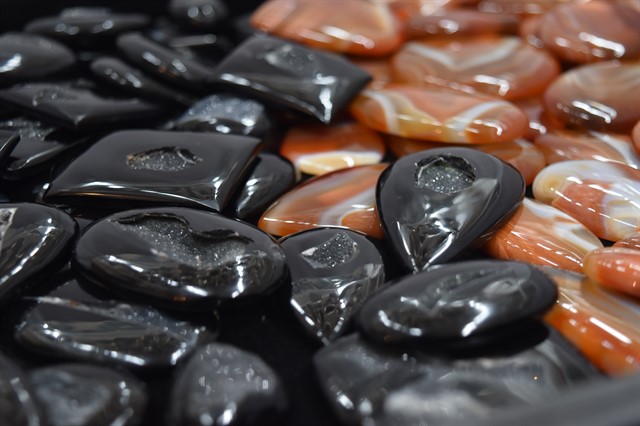Uncategorized
A Little Gemology
Gemology is the field of gems and includes the manner of gemstone formation, sorting, classification, their crystalline structure and the manner of formation. All these and more give the gemologist the ability to evaluate the value of the gemstone.
I decided to share a few tips that form the basis of this field but the best place to start is to purchase your stones from a reputable place whose specialty is in crystals and gems.
Criteria to define a stone as a gem:
Beauty – The stone must be beautiful, there are criteria that define the beauty of the stone: color, luster, transparency and cleanliness.
There is general agreement about the ideal color of certain stones such as “pigeon’s blood” for the Burmese ruby or a velvety royal blue for the sapphire.
Durability – This criterion describes the feature that deals with the durability of the gemstone over time.
Hardness – scratch resistance. The scale ranks the hardness of various minerals in the scale from 1 to 10, with 1 having the lowest durability and 10 having the highest (the Mohs scale):
- Talc
- Gypsum
- Calcite
- Fluorite
- Apatite
- Feldspar (moonstone, amazonite)
- Quartz
- Topaz
- Corundum
- Diamond
Toughness – the stone’s resistance to blows and fractures
Stability – the mineral’s resistance to destruction or damage caused by the sun, water, air, or chemicals (oxidation and acids).
Rarity – the more beautiful the gemstone, that is, the cleaner and more flawless it is, the rarer it is. This is what preserves the proper price and value of the stone.
Tradition – History and tradition are an integral part of the marketing and sales of gems.
Public Relations – In today’s world we are constantly exposed to advertisements, the value of a stone can vary according to its PR and promotion. Note that sometimes misleading names are used to promote a particular stone, for example smoky topaz instead of smoky quartz (the brown topaz is called imperial topaz and is completely different from the smoky quartz variety) but the use of the name topaz instead of quartz helps sell much more of this stone.
Criteria for determining the value of a gemstone:
There are 4 criteria for determining the value of a gemstone (called the 4Cs):
- Color: This criterion is the most important for determining the value of the gemstone.
- Clarity: The amount of light that passes through the stone. There are transparent stones, semi-transparent to opaque. The level of desired transparency varies from stone to stone.
- Cut: There are many different forms of stone cutting. 2 common examples:
Cabochon – the base is straight and the top is rounded.
Usually intended for inlay in jewelry. Facet – very common polishing which is also known as diamond polishing. This polishing includes many angles and sides. The level of accuracy and proportions in polishing are important and affect the value of the stone.
- Carat weight: The gems are measured by a unit of measure called a carat. One carat is equivalent to 0.2 grams.


 עברית
עברית
